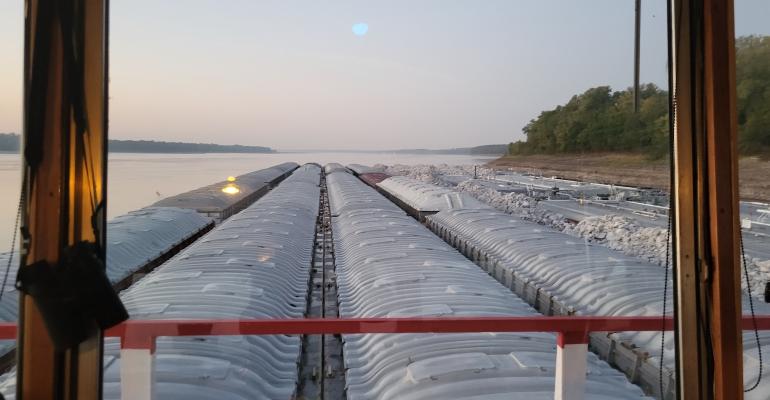Volvo’s Autonomous Solutions (VAS) has opened in Texas and is accepting reservations for service.
Category: News
News
Save the Date!! The MAFC 2023 Annual meeting will be held in conjunction with the OKI Conference on Freight! We hope to see you there! SAVE THE DATE! 2023 OKI Conference on Freight September 5-7, 2023 Hyatt Regency Cincinnati Sign up HERE to receive email updates on the 2023 OKI Conference on Freight.
Low water levels on the Mississippi River are slowing barge movements. To add to the frustration of the delays, there is an industry wide work force shortage, and the tow’s cost of operation continue and multiple with the delays. Read the article at: https://www.farmprogress.com/harvest/its-disastrous-barge-captain-explains-transportation-woes-shallow-mississippi
Kansas DOT is responding to changes in travel and freight movement to ensure their agency supports the existing and expected changes in transportation, communications, and IT technologies. Secretary Lorenz of Kansas DOT recently announced they are establishing the Multimodal Transportation and Innovation Division at KDOT. She added, this division, led by Cory Davis, will contain the Bureau of […]
Meeting materials and presentations are now available from the 2022 MAFC Annual Meeting, held in conjunction with summer MAASTO meeting. Des Moines, Iowa. July 26 and 27th, 2022. https://midamericafreight.org/index.php/2022-mafc-conference-and-annual-meeting/
With the continued tension between infrastructure needs and available funding, Colorado’s Senate Bill 260 looks to a least partially remedy the situation through a unique tax that captures the infrastructure use by home delivery, courier and driver services. For example, each Amazon or UPS delivery will cost an additional 27 cents. For services like Uber […]
Join MAFC in Des Moines, Iowa, at the MAASTO Annual meeting to talk freight! Session topics include freight vehicle electrification, freight corridor resiliency, soy and ag transport, FACs, and a MAFC working session. After 3-years of virtual meetings, the group is looking forward to meeting face to face and we hope you will join us in De […]
The Biden-Harris Administration announced a new initiative to improve supply chain data flow that could provide information to support freight corridor and multimodal planning. FLOW, the Freight Logistics Optimization Works (FLOW) is intended to speed up delivery times and reduce consumer cost through greater coordination and information sharing across key logistics and industry players.
What do current supply chain challenges mean for truck parking shortages? While the world of logistics is seeing new pressures exacerbated by an “…online shopping boom, lower inventories and federal mandates on driver rest…”, truck parking and related driver safety issues persist. A recent article from Bloomberg highlights continued truck parking issues in light of continued supply […]
Many major cities around the world were founded on marine transportation corridors. St louis lays claim to this history and is working towards revolutionizing container freight movement in the region. Read about the promising and long-awaited Container on Barge (COB) development for the Mississippi River in the KSDK.com article “New St. Louis port bringing container ships […]






